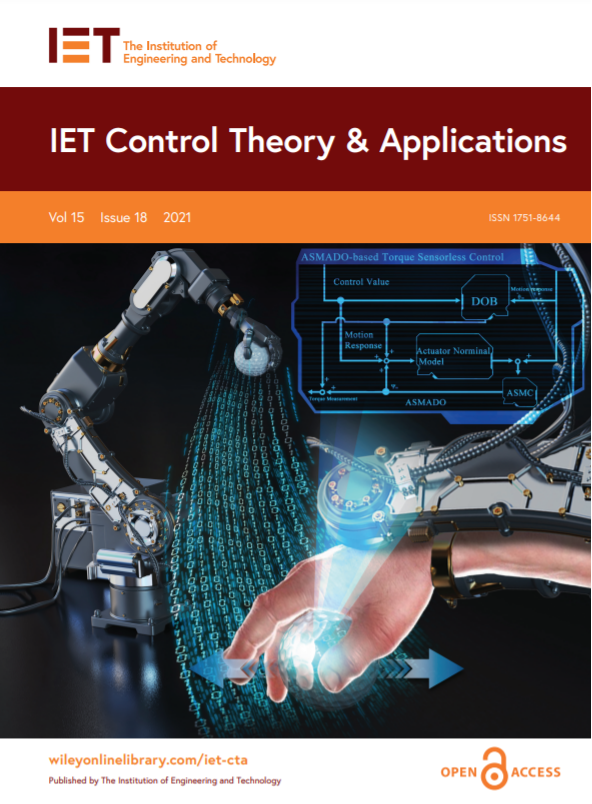Author: TIAN Dapeng |
Bilateral teleoperation system has been applied in numerous fields such as surgery, explosive removal and construction machinery. Good transparency (position tracking and force feedback) is an important performance index in the control design of bilateral teleoperation systems. How to improve the transparency of the bilateral teleoperation system has been a key and hot issue.
Recently, Prof. TIAN Dapeng’s research team from Changchun Institute of Optics, Fine Mechanics and Physics (CIOMP) of the Chinese Academy of Sciences (CAS) proposed a finite-time adaptive sliding-mode-assisted disturbance observer (ASMADO), which cleverly avoided the drawback of the traditional disturbance observer (DOB) and the adaptive sliding mode control (ASMC). The proposed method not only improved the system transparency with both force feedback and position tracking, but solved the chattering problem of the controller. This study has been published as a Featured Cover in IET Control Theory & Applications (Q1, IF: 3.527), a prestigious journal in the field of control science.
Researchers first proposed a finite-time ASMADO that replaced the force sensor to detect forces perception and achieved good transparency performance in a bilateral teleoperation system. The DOB was constructed to estimate the forces in the low frequency domain. Considering the estimation error, researchers designed a ASMC to compensate for the DOB estimation error to detect forces in a wider bandwidth. This sliding mode assisted idea effectively improved the performance of the precision of the force observation.
The convergence of the proposed method is the premise to ensure its performance. To prove the stability of the ASMADO, researchers constructed the suitable Lyapunov function. Under the theoretical analysis, the observer estimation error was ultimately uniformly bounded and could also converge to the neighbourhood of zero in finite-time.
To confirm the validity of the developed method, the researchers performed experiments on the brushless DC motors. The experimental results show that the master and slave actuators of the bilateral teleoperation system achieved great position synchronization; the force responses of the master and slave actuators satisfied the action-reaction law. Under the proposed method, the bilateral control system achieved great transparency. In the future, this technology is expected to be applied in the surgical operating instruments and other related fields.

Featured cover of the published paper (Image by TIAN)
TIAN Dapeng
Changchun Institute of Optics, Fine Mechanics and Physics
E-mail: d.tian@ciomp.ac.cn
